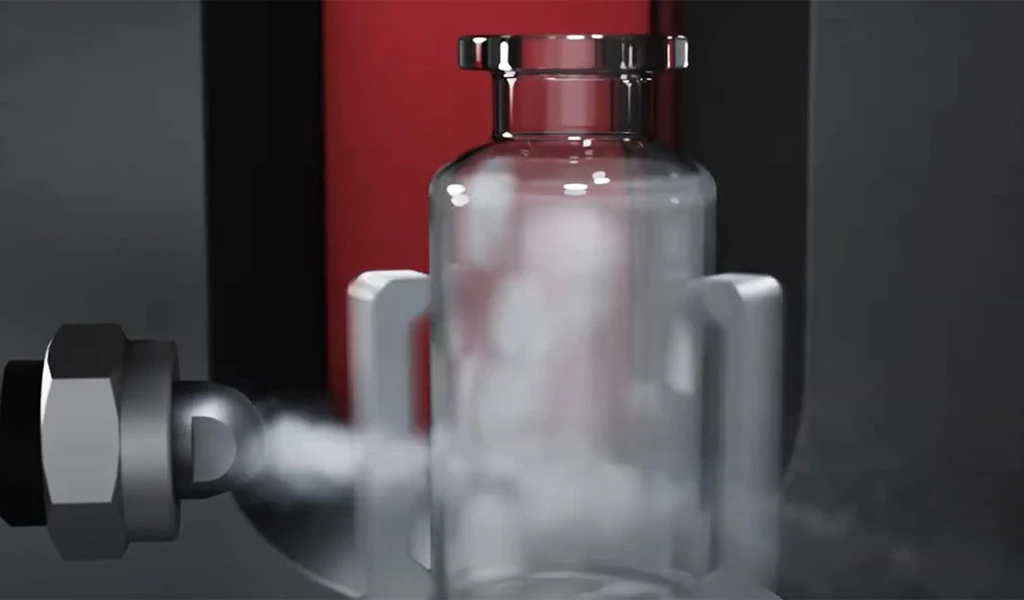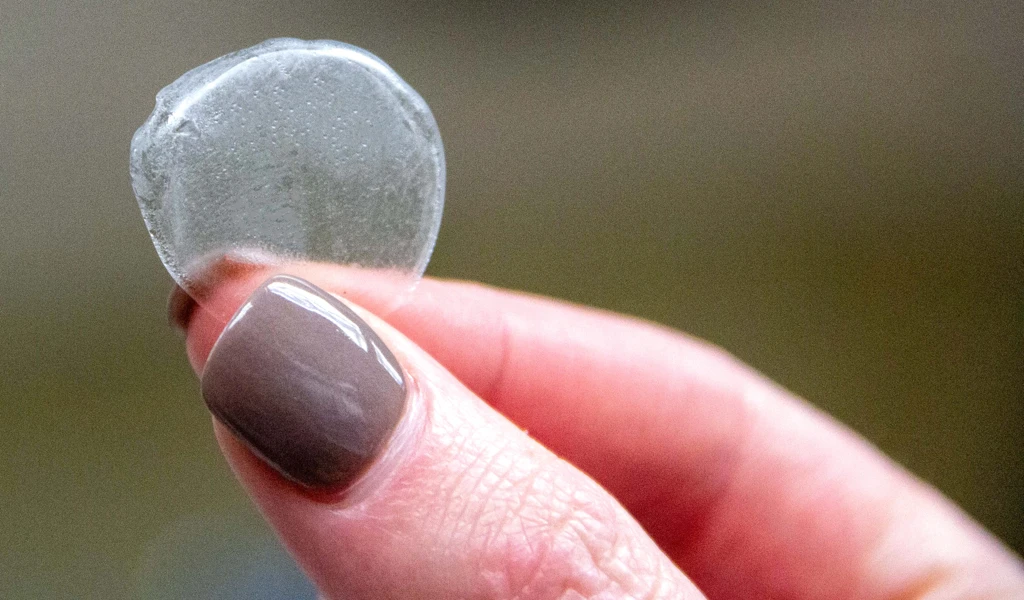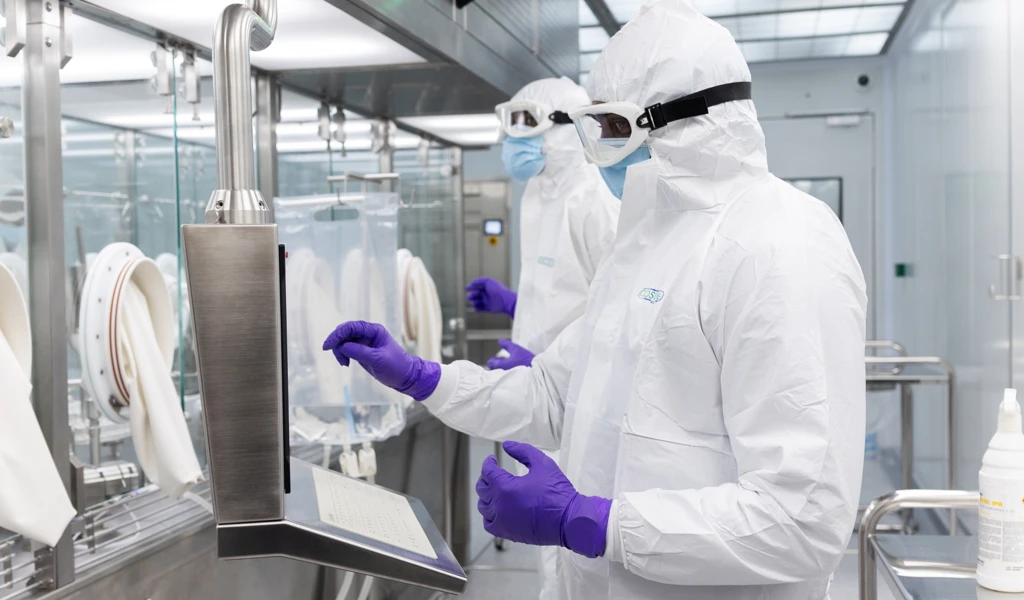From coffee pods to moths – the innovation inspirations to help beat pandemics
What do a coffee pod, a pen, a moth chrysalis and a plant have to do with solving vaccine access challenges? These are some of the ordinary things inspiring extraordinary solutions to increase how quickly vaccines against future viral threats could be given to all those in need.
The principle of enabling equitable access to vaccines during future outbreaks is the driving force behind the 100 Days Mission—a goal to develop vaccines within 100 days of a new outbreak with pandemic potential being identified. The more quickly protective vaccines can be deployed, the sooner an outbreak can be contained. Speed then becomes the enemy of inequity since fewer vaccines are needed, and supplies can be directed to people who need them most.
This bold mission isn’t something that can be achieved in every outbreak situation right now. Part of the 100 Days Mission’s success requires identifying innovations that can accelerate the speed of vaccine manufacturing.
And it’s not enough to develop vaccines more rapidly than ever. Overcoming complex vaccine storage requirements will be crucial for enabling people who need vaccines to get them. Vaccines that need to be stored at temperatures colder than parts of Antarctica in the depths of its winter might not be best suited to resource-limited countries in sub-Saharan Africa, for example.
CEPI has invested in around 15 proof-of-concept vaccine manufacturing innovations to overcome these challenges in a bid to produce vaccine platforms that can deliver the 100 Days Mission. And the inspiration behind these new technologies has come from some wholly unexpected places.
Turning up the heat on vaccine technology
Take coffee pods for example.
The aluminium capsules used in many at-home coffee machines are similar to ones being manufactured for Vaxxas, an Australia-based biotech company.
Their needle-free vaccine platform uses a high-density microarray patch made up of thousands of microscopic points, almost like a tiny hedgehog. Each of the micro-projections contains a tiny dose of dried mRNA vaccine. When applied to the skin, the patch—contained in a coffee-pod-like case—delivers the vaccine to immunity-inducing cells below the skin surface.
mRNA was vital during the COVID-19 response. But mRNA itself is incredibly fragile. To ensure its stability and effectiveness, it needs to be stored at very low temperatures. This requirement came with disastrous impact during the COVID-19 pandemic. Countries that didn’t have ultra-cold storage infrastructure were unable to easily receive these vaccines, leading to delays in vaccination.
Unlike current mRNA-based vaccines, the Vaxxas patch offers a heat-stable alternative that doesn’t require ultra-cold storage, meaning it could be stored in warmer climates. “The technology is also easy to administer, even offering the potential for self-administration,” said Vaxxas CEO David Hoey. “We’re incredibly excited about how this could translate into making these life-saving vaccines easier to transport, potentially mailed in the post, and far more accessible in all regions.”
With the potential for vaccines to arrive by post, the concept of ‘next-day delivery’ takes on a potentially life-saving new meaning.

______
Then there’s the humble pen. This everyday writing tool has inspirational potential in a new generation of heat-stable and needle-free vaccine innovations.
The UK company aVaxziPen, as the name suggests, uses a pen-like applicator device that both removes the need for needles and syringes and protects the mRNA from heat, potentially removing the need for ultra-cold storage of mRNA vaccines.
This technology could also be applied to traditional protein-based vaccines. While protein-based vaccines don’t typically require frozen storage, they often need to be stored at temperatures between 2-8°C. Developing a vaccine platform that can be stored in temperatures up to 40°C for one or two months would simplify last-mile delivery even in the world’s most remote regions.
And for those who wince or faint at the sight of needles, patches or pens offer a more palatable vaccine delivery method too.

Vaccine development in the fast lane
While Vaxxas and aVaxzipen are focused on making vaccines less sensitive to heat, temperature-stable vaccines are just one part of the access equation. Speed is also a driving force behind access and a guiding principle of the 100 Days Mission. That’s why companies like the Spanish biotech Algenex are thinking outside of the box—or inside of the chrysalis—to speed up vaccine production.
Algenex’s innovation aims to speed up the bioreactor stage of vaccine development, which can take up to two weeks using current methods. Already used in some animal vaccines, Algenex’s CrisBio® technology modifies a type of harmless insect virus with instructions to produce an antigen—the part of a vaccine that alerts our immune defences to fight off a disease. This is then inserted into a moth chrysalis grown in a laboratory, which causes the insect cells to generate large quantities of antigens much faster than existing bioreactor technologies can.
Just as greenhouses provide perfect conditions for plants to grow, controlling light, temperature and humidity, a bioreactor is like a high-tech greenhouse. It carefully manages conditions like pH, oxygen levels, and the nutrients needed to produce antigens in a vaccine. Algenex’s technology essentially enables the chrysalis to act as a living bioreactor creating the perfect conditions for vaccine antigens to grow.
“This technology could bypass the need for smaller, iterative bioreaction processes and regulations, and ultimately speed up vaccine production timelines,” said Algenex’s founder José Escribano.

______
Innovators at Germany’s LenioBio are also turning to the natural world for inspiration. They are taking a plant-based approach to find a faster way of producing vaccine proteins—specific proteins identified from pathogens and used to stimulate an immune response without causing disease.
Protein-based vaccines can take four to six months to develop as scientists need to grow special cells that can produce the necessary proteins—known as a cell line. By contrast, LenioBio’s technology, known as ALiCE®, uses the protein production machinery of plant cells to rapidly express proteins without needing to grow entire cells. This cell-free approach means that no cell line development is required, and the protein-based vaccine could be developed in 20 to 40 days, once the genetic instructions for the protein are available.
This technology could enable rapid and scalable development of protein-based vaccine candidates and move promising candidates more quickly into clinical trials, bringing the 100 Days Mission goal closer.

“CEPI is proudly investing in technologies that will one day make the 100 Days Mission a reality. Whether that’s new technology that gets vaccines from lab to jab even faster, or needle-free and heat-stable vaccines that mean everyone who needs a vaccine gets one,” said Raafat Fahim, Interim Executive Director of manufacturing and supply chain at CEPI. “Each small innovation, each little gain will help to control a future outbreak before it spirals into a pandemic. Exciting technology like this is helping to eliminate the threat of future pandemics once and for all.”
Learn more
See other CEPI-funded manufacturing innovations

New ‘spin freezing’ technique could enhance future mRNA vaccines

CEPI partners with Ethris to increase access to RNA vaccines through spray-dry technique

CEPI partners with biotech Jurata Thin Film to create needle-free mRNA vaccines and improve access

Stabilised mRNA vaccine technology aims to end need for frozen storage and improve access

CEPI partners with Afrigen to speed up mRNA vaccine development and access

Project to explore speed up of mRNA vaccine production deployable for local outbreaks

Pushing mRNA vaccine development timelines to new speeds

CEPI and Micron Biomedical accelerate needle-free vaccines against Disease X

Canadian scientists to optimise vaccine process for faster outbreak response

CEPI partners with Rwandan-US Akagera Medicines to improve the delivery and accessibility of mRNA vaccines





